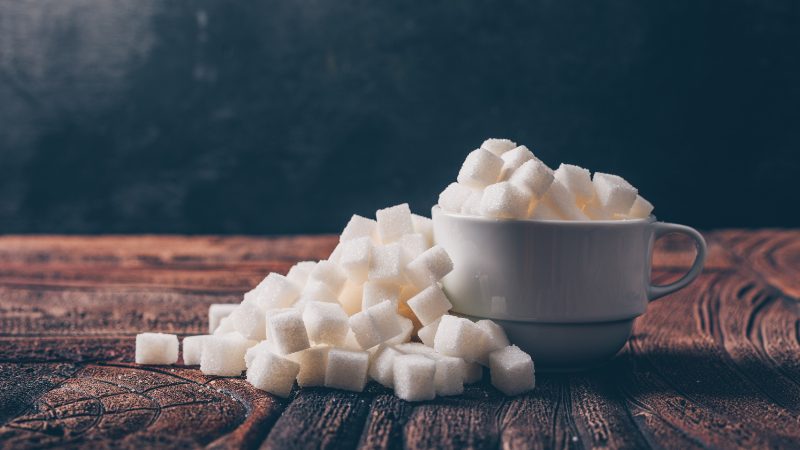The Many Faces of Sugar in Drinks
- Glucose: Naturally occurring in fruits, glucose is one of the primary sugars found in fruit juices and soft drinks. It serves as the body’s preferred energy source, rapidly absorbed into the bloodstream to provide an immediate energy boost.
- Fructose: Also found in fruits, fructose is sweeter than glucose and is commonly present in fruit juices and soft drinks. While it adds sweetness to beverages, excessive consumption can be concerning due to its unique metabolism in the liver, which can lead to health issues when consumed in large amounts.
- Sucrose: Known as “table sugar,” sucrose is a disaccharide made up of glucose and fructose. It is widely used in various products, from soft drinks to cocktails, and plays a significant role in enhancing flavor and providing sweetness.
- Maltose: Primarily found in beer, maltose is a sugar derived from grains. Although it is less sweet than glucose or fructose, maltose is crucial in the fermentation process, contributing to the production of alcohol in beverages.
- Lactose: Present in milk-based drinks like certain smoothies and protein shakes, lactose is the sugar found in dairy products. While it is not typically included in fruit juices or sodas, it adds a unique flavor and texture to dairy-based beverages.
Health Implications: Too Much of a Good Thing?
Traditional Enzymatic Sugar Reduction: The Acid Challenge
- Production Complexity: Adding buffering agents makes the manufacturing process more complicated, leading to additional steps and costs.
- Altered Flavor Profile: Buffering agents can sometimes introduce their own flavors, which may not blend well with the desired taste of the beverage. This can result in an undesirable taste or an off-flavor.
- Mouthfeel Changes: The addition of buffering agents can affect the mouthfeel of the drink, making it feel different in the mouth. For example, some buffers might create a slightly chalky or gritty texture, which can be off-putting for consumers.
- Impact on Sweetness Perception: The chemical interactions between buffering agents and other ingredients can alter how sweetness is perceived. In some cases, the presence of certain buffers may diminish the overall sweetness, leading to a less enjoyable drinking experience.
- Potential for Chemical Reactions: Buffering agents can sometimes react with other components in the drink, potentially leading to cloudiness or sediment formation, which can affect the visual appeal and overall quality.
- Consumer Perception: Many consumers are becoming more health-conscious and scrutinizing ingredient lists. The inclusion of buffering agents can raise concerns among consumers about what they are consuming, especially if these agents are perceived as artificial or unnecessary.
acib’s Enzymatic Approach to Sugar Reduction
From Sucrose and Fructose to Oligo-fructose:
Oligo-fructose, a prebiotic sugar, serves as a functional ingredient that not only adds sweetness but also promotes gut health by acting as a food source for beneficial gut bacteria. With growing awareness of the importance of digestive health, oligo-fructose is increasingly appealing to health-conscious consumers. Moreover, because oligo-fructose does not need to be declared as “sugar” on labels, it helps manufacturers create products that align with the “no added sugars” trend, enhancing their marketability.
From Fructose to Allulose:
Allulose, a rare sugar found naturally in small quantities in certain fruits, offers an exciting alternative for those looking to reduce caloric intake without sacrificing sweetness. Providing approximately 70% of the sweetness of regular sugar while containing only about 10% of the calories, allulose is particularly beneficial for calorie-conscious consumers. It doesn’t raise blood sugar levels or contribute to tooth decay, making it a safer choice for those with dietary restrictions or concerns. Already approved by the FDA and with EU approval in the pipeline, allulose is poised to become a popular ingredient in the quest for healthier beverages.
A Healthier, Sweeter Future
So, the next time you reach for a fruit juice, beer, or lemonade, consider what’s in it – and imagine a world where your favorite beverages are just as sweet, but better for you. That’s the future we’re helping to create. Contact us today to discover how our expertise can help elevate your beverages and meet the demands of the modern consumer!
Picture by Freepick
